Brazil has always been known for its ability to produce football players that will later be superstars in Europe. This season is no exception. The Serie A is full of gifted footballers who are playing along with some that have already made their mark in football – Dani Alves, Felipe Luis (formerly of Atletico Madrid) and still promising Gabriel Barbosa. In this data analysis, I will use data and statistics to outline several players that have performed well statistically in 2019 season – defenders, midfielders and attackers included. I want to point out straight away that the numbers don’t fully paint the picture of quality or talent of any player without the right context. A defender playing in a dominant side like Jorge Jesus’ Flamengo will make fewer tackles or interceptions per 90 than a defender who is playing for a side that uses mid/low block. The same principle applies to other positions. The point of this data analysis is to find some interesting names in Série A by using numbers and statistics.
I filtered the data with players who have had 900+ minutes last season and I will be using several data charts with different metrics to sort players. Hopefully, you find some names that you will keep an eye on after this analysis.
Midfielders
In the first section of this analysis, I will look into the Série A midfielders who are doing well in several categories. Let’s start off with the first chart, featuring the best players in Brazil at ball progression through runs and passes:
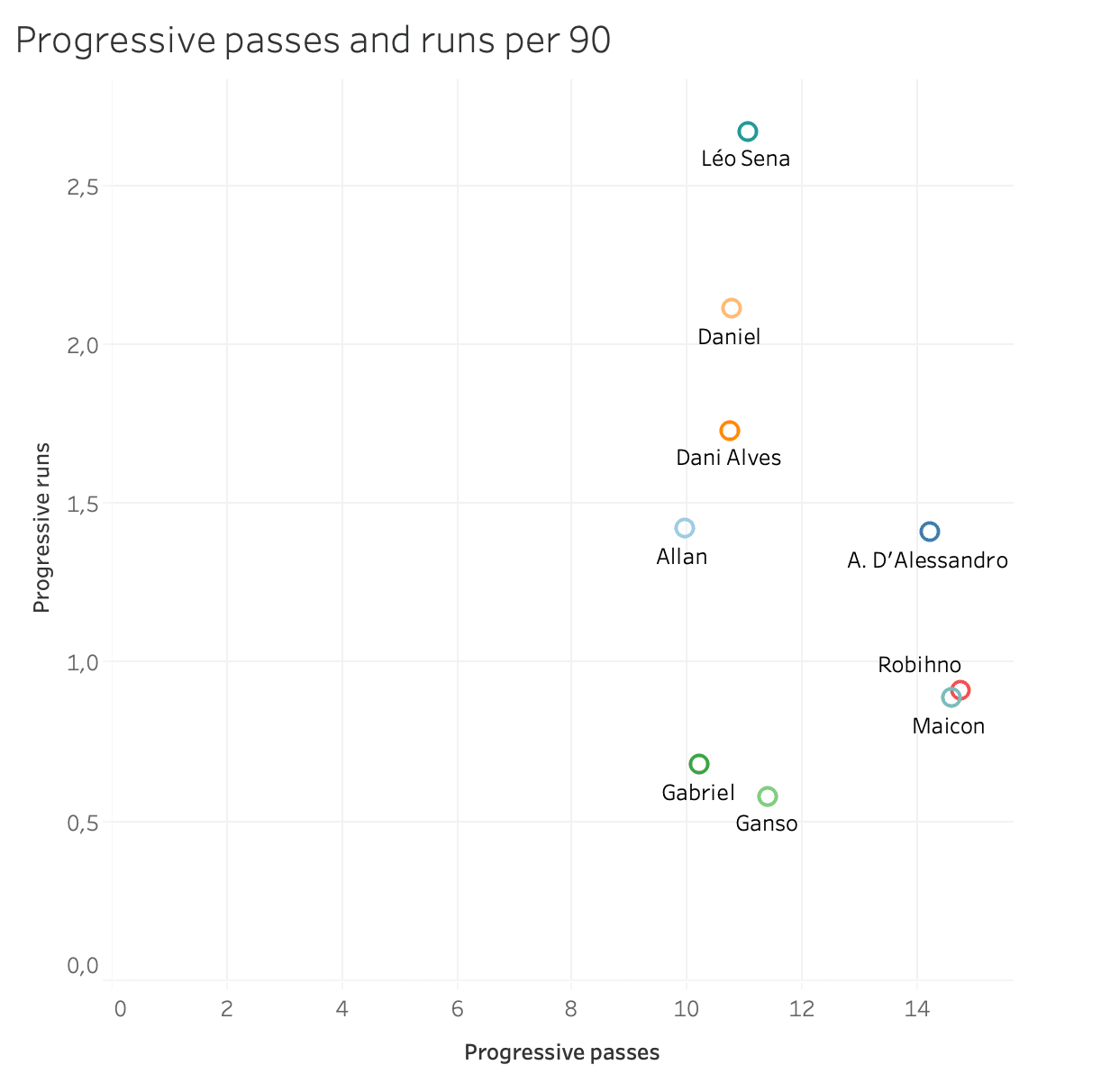
Progressive runs and passes are defined by Wyscout as runs and passes that get the ball closer to the opponent’s goal for 10-15 yards. The closer to the goal, the smaller the distance is (passes with the length of 10 yards count as progressive in the final third). I added Dani Alves here because he was playing a lot in the right midfielder role and was covering the whole right flank for São Paulo. You can see that the best performing players in this chart are Léo Sena and Andrés D’Alessandro.
D’Alessandro is a 39-year-old midfielder playing for Internacional and he has had a great 2019 season with 1,41 progressive runs and 14,21 progressive passes per 90 minutes along with six assists. You will see him in some of the next charts. The next chart will be very similar to the previous one as it will also show statistically the best midfielder in ball progression. However, this graphic pictures the best passers into the final third.
On the y-axis, I used key passes, and on the x-axis, I used deep completions. Deep completions – accurate passes into the 15-yard radius around the goal.
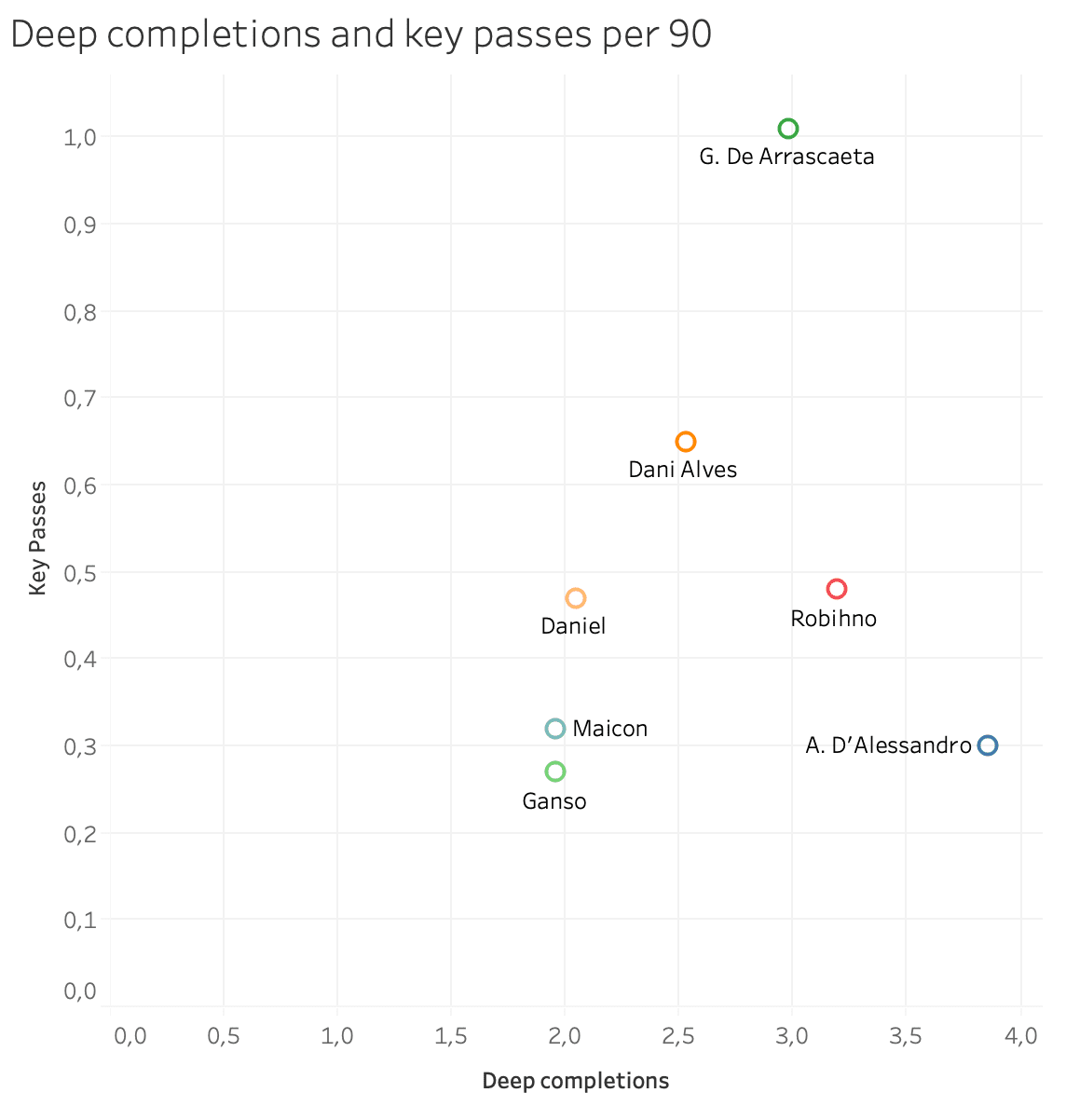
You can tell that De Arrascaeta is by far the best midfielder in terms of key passes per game and a very close third in terms of deep completions. He has had an incredible season from a playmaking and scoring points of view. Having been playing in a dominant Flamengo side as a left attacking midfielder, he has been practically equaling two shots per game, 2,67 crosses with 36% accuracy and 4,7 dribbles with 56% completion rate (all per 90).
The next shot represents some of his stats from last season, and what is worth noticing is that despite his playmaking ability, he has been lethal in the 18-yard box too with 0,6 goals per game. This differentiates him from other midfielders and puts him on another level.
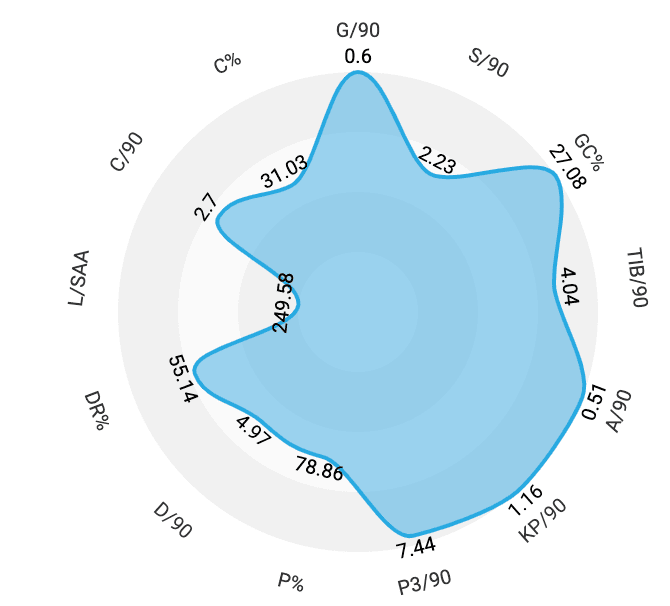
The next best-performing player is none other than the player with the most titles on the planet – Dani Alves. Below you can see his heatmap and he is probably the most active player in the league on the right flank. With 0,33 goals and assists per 90 minutes, he keeps performing on a world-class level despite his age.
He finished the season with 12 assists, although he only played 19 games, which is exactly half of the full season in Brazil. So, who knows what he might do next season if he has the stamina to continue on the same level.
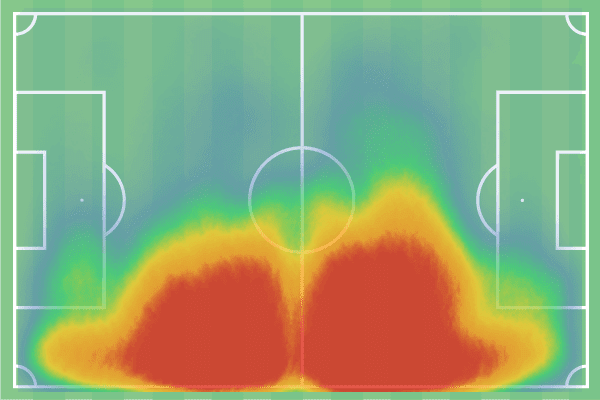
The last chart of this section will be devoted to assists – expected and real ones. Again, you can see familiar faces in De Arrascaeta, who’s got the most assists in the league (11) and also Dani Alves. Also, the three players on the top of expected assists who all underperformed their numbers – Dudu, Sánchez and De Arrascaeta’s teammate on the other flank Éverton Ribeiro.
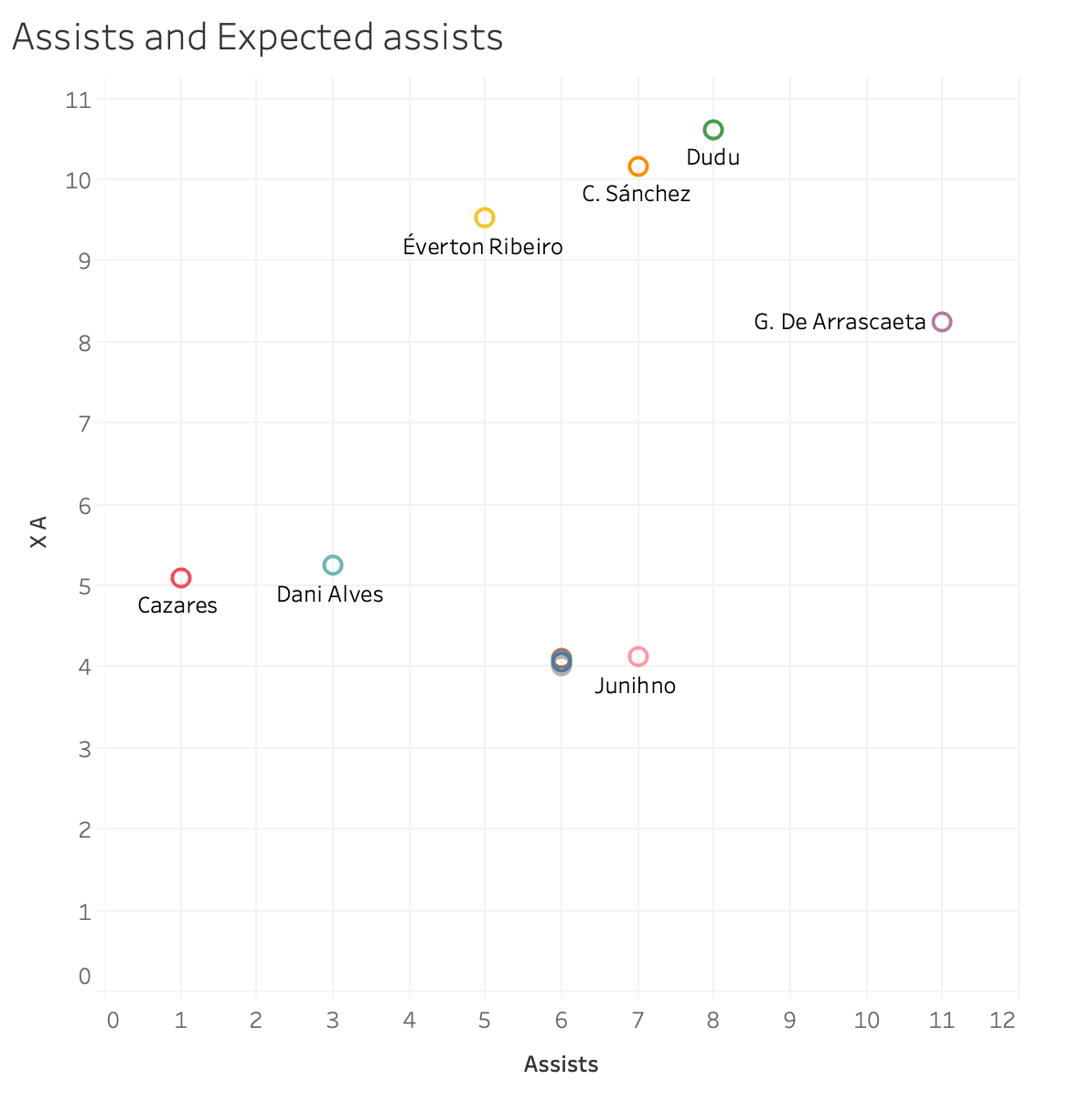
Let’s start with Dudu. He is a 28-year-old attacking midfielder from Palmeiras with 0,42 goals and assists per 90, 7,63 dribbles per 90 with 57% success rate and 3,96 crosses with 34% accuracy.
The next on the list is 35-year-old Carlos Sánchez, who has averaged 0,54 goals and assists per 90 minutes, 3,45 crosses with 41% accuracy and 2,63 shots per game.
Éverton Ribeiro, as any Flamengo attacker, has had a very productive season, forming a great partnership with Gabriel Barbosa, who I will mention in the next section of this analysis. He had a brilliant year as a playmaker, and while Bruno Henrique, De Arrascaeta and Gabigol were putting up numbers, Ribeiro has been the glue that held the attacking group together.
Statistically, he’s got 0,32 goals and assists per 90 minutes, 5 dribbles per game with 55% completion, 0,68 key passes and 5,61 final third passes per 90 minutes.
In the next section, we will look at the best performing forwards and wingers of 2019 Série A season.
Strikers and wingers
Série A has a plethora of talented attacking players, and the focus on the attacking play in this league allows footballers in the right system to thrive. Top four teams of the league (Flamengo, Santos, Palmeiras and Grêmio) have scored 1,8 goals per game. The best example of this is Jesus’ Flamengo, as I mentioned their players the most in this analysis. Here are their three attacking players’ goal contributions:
- Gabriel Barbosa – 52 goal contributions
- Bruno Henrique – 48 goal contributions
- De Arrascaeta – 35 goal contributions
You can see that the implemented intensive and tactically-oriented style of play by the Portuguese coach definitely bore fruit for those three. Plus we shouldn’t forget Éverton Ribeiro and Vitinho, who also had great seasons.
Other teams also have a handful of good attacking players. In the next chart, I took xG+xA per 90 minutes and non-penalty goals per 90 minutes to determine the most creative attacking players.
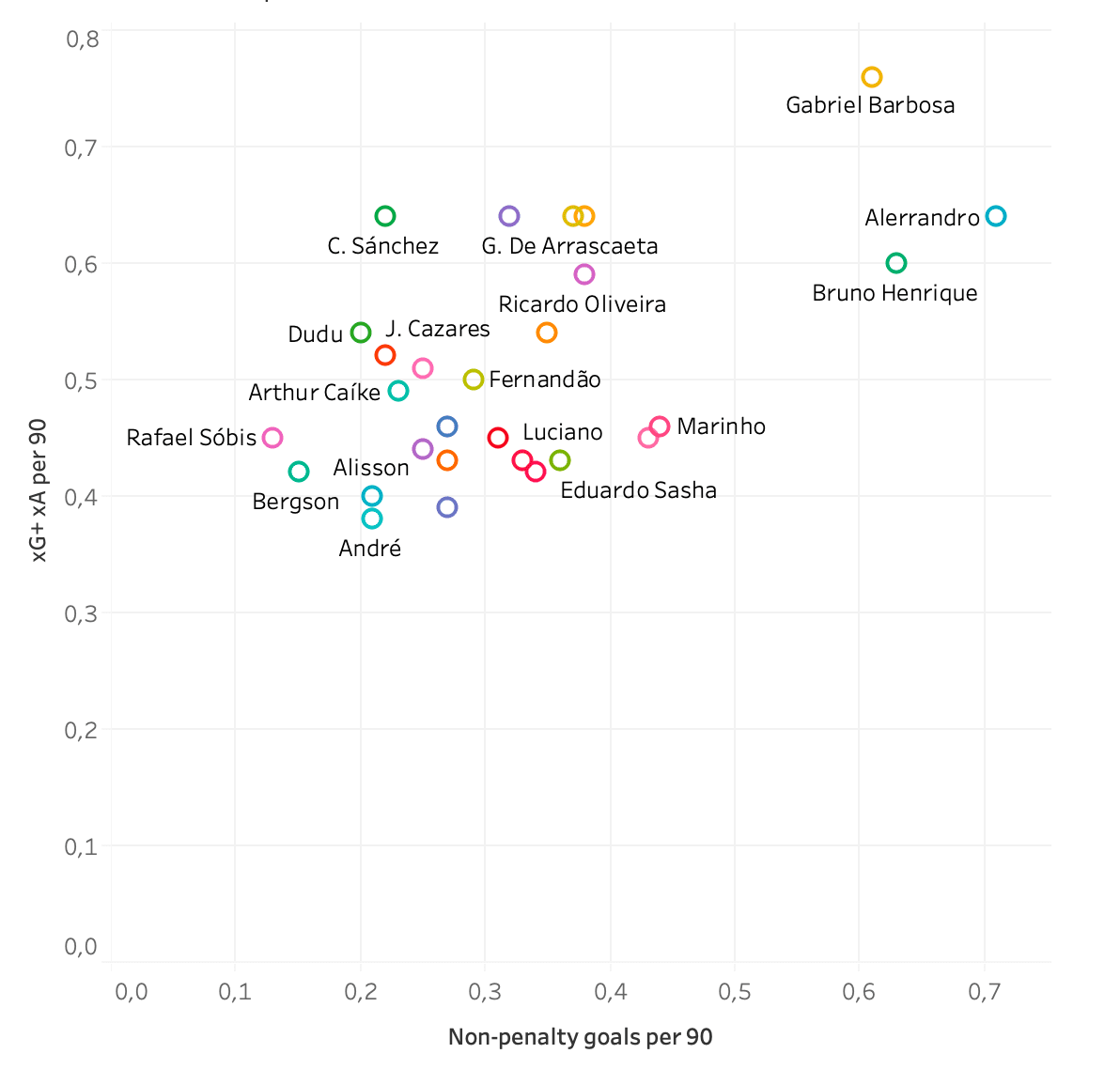
Right on the top, we have Gabigol, about whom I wrote a piece which you can find on Football Bloody Hell. Incredible numbers, pressing, link-up play – he has a lot of great traits in him which can provoke the attention of European clubs after a failed chance at Inter in a different Serie A. Slightly lower in terms of expected goals and assists per game is Gabigol’s teammate Bruno Henrique, who has had a great season in terms of numbers, and he is the second goalscoring threat at Flamengo.
Between those two star attackers, you can spot a 20-year-old Alerrandro, who was playing for Red Bull Bragantino in Série B, and he is worth mentioning because he played 26 games and netted 13 goals, averaging 0,76 goals per 90 minutes. If he can replicate those numbers even by half next season, we will potentially be looking at another great prospect.
Below is the last and basic chart of this analysis, consisting of goal contributions on the x-axis and a total of matches played on the y-axis. There are a lot of familiar players that we have seen in previous charts such as Carlos Sánchez, Dudu and De Arrascaeta. Carlos Sánchez, despite his age, played over 50 games and was very close to achieving 25 goal contributions from the right midfield position, which is commendable.
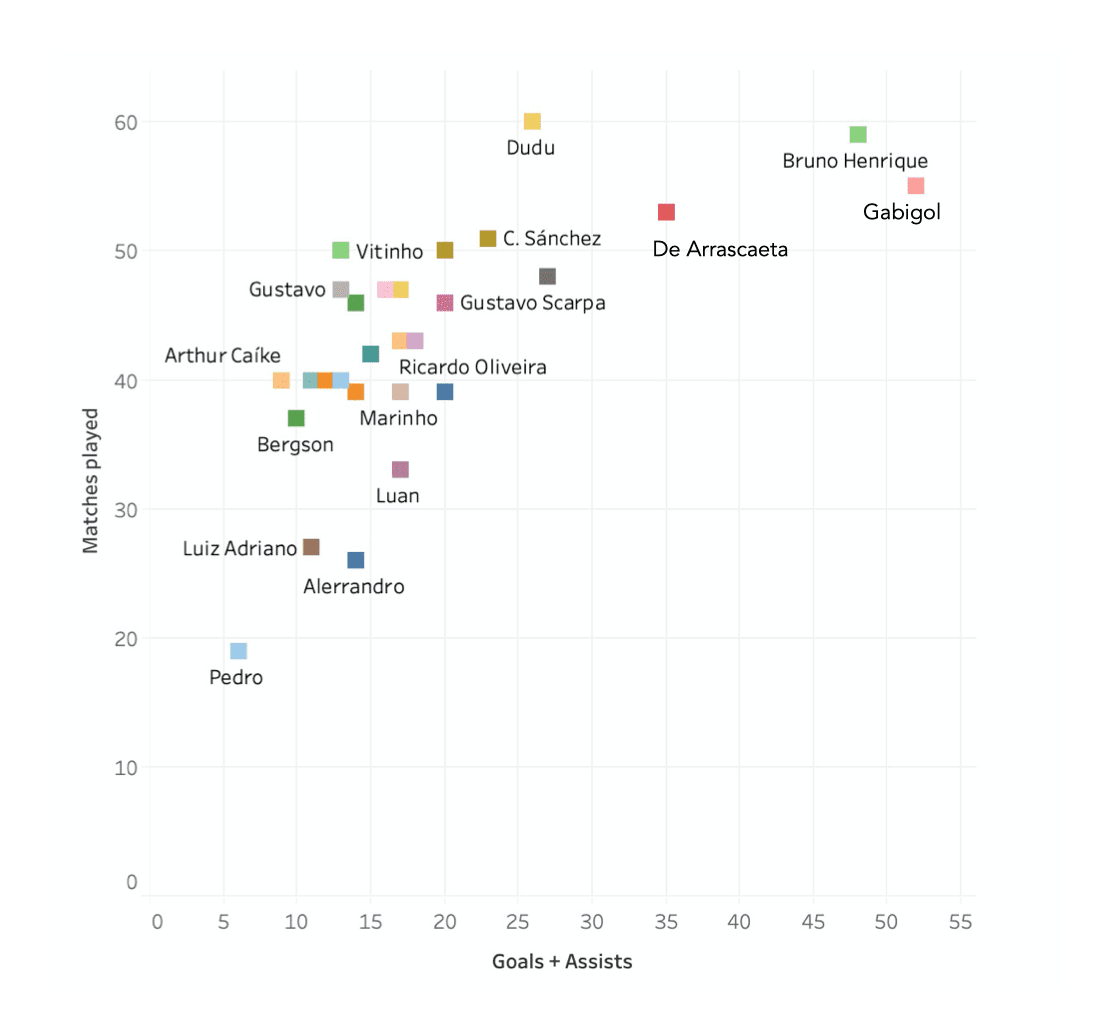
Here I want to mention the 24-year-old Everton from Grêmio, who made himself known at Copa América last year and kept his great performances into the following season as well. He has scored 21 goals along with 10 assists in the whole 2019 season. He is one of the most aggressive dribblers of Série A with 9,92 dribbles per game with 42% success rate. And with three progressive passes and runs per game, 2,8 shots per game and 0,49 key passes, he put himself in the shop window for a potential European move.
Conclusion
Due to Flamengo’s incredible season, the best players were from their team, but it wasn’t hard to depict some other players that played well – Carlos Sánchez, Dudu, Everton, Dani Alves and so on. There is a nice mix of experience and talent in all the players, and some players dominate more due to experience and some from the talent and from the desire of seeking a better career. Série A is a fun league to watch and hopefully the mentioned players will heat up your interest for it.





Comments